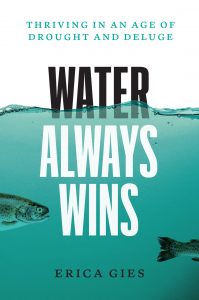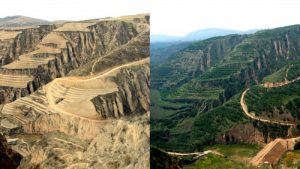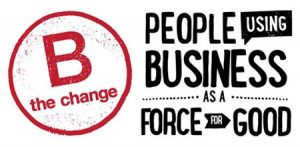“Just left our house at 4:30 AM under a mandatory evacuation order, in the pitch dark, with howling winds, apocalyptic smoke, and ash swirling all around us. I’m quite shaken. We’ll figure out a plan when the sun comes up.”
That was the note that I posted on my Facebook page on the morning of October 27, 2019, once my husband and I were able to pull over in a town further from the fire, where other evacuees were parked. Overnight, gale-force winds from the northeast had started pushing the Kincade Fire rapidly and directly towards our area. (Officials feared it might jump over Highway 101, as the highly destructive and uncontrollable Tubbs Fire had done two years before, when it rampaged across the city of Santa Rosa to the horror and amazement of firefighters and everyone else.) Less than half an hour before I posted that note, we had been awakened by an evacuation notification alert blaring on our mobile phones. I could barely keep my panic at bay as we rushed to load our van up with our blind cat, along with other irreplaceable items and essential supplies that we had been gathering up in bags near our front door over the past few days of evacuation warnings. Our faces were pelted by brittle, wind-driven needles from our parched but magnificent redwood trees, and we had only our headlights and phone flashlights for lighting as we carried our things out to the van. I had to make a conscious effort to keep myself from hyperventilating or bursting into tears as we got into the vehicle and drove away from our home. I was reluctant to look back at it, knowing that when we returned, it might be burned to the ground.
This was one of the most intense days of my life. We were able to stay with friends in another part of the county for four days, until the order was lifted, and we were fortunate to be able to come back to an intact home and neighborhood (because the winds had died down before the fire got to the highway or beyond), though our power remained out for our first day and night back and the house felt like a walk-in freezer. We didn’t know it at the time, but we were part of the largest evacuation ever in Sonoma County history.
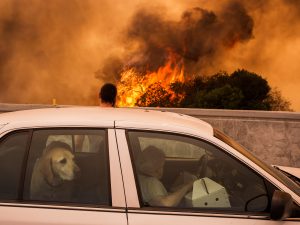
Many of us who are residents of the western United States have been personally affected by worsening (more frequent and much bigger and hotter) wildfires and the ever-longer fire seasons that we’ve been experiencing these past 5-10 years. The regular Red Flag “fire weather” warnings, the explosive fires every year, nerve-wracking evacuations and evacuation warnings, hazardous and acrid-smelling smoke in the air (tiny particulates that get deep into your lungs and make it feel like you’re sucking on a filthy truck exhaust pipe any time you’re outside) sometimes lingering for weeks at a time and making the air quality worse than anywhere else on Earth, being surrounded by other-worldly burnt-orange skies that block out the sun, sooty ash (including tiny fragments of people’s books/homes/lives) covering every outdoor surface (requiring the use of windshield wipers to clear car windshields), extended power outages as well as Internet and cell tower outages, and other substantial disruptions to work and to life in general—these things have taken a real toll on millions of us, and will take a toll on millions more.
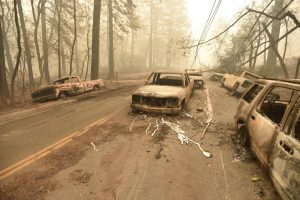
Many of us also know people who have lost their homes and their sense of security—and who became climate refugees, facing displacement, years of insurance headaches, PTSD, and nightmares—because of these fires. I have some good friends who went through this trauma in 2017; they had to flee a giant wildfire in the middle of night and barely got out alive. I helped sift through the rubble and toxic ashes of their destroyed home and work studio. It looked like a large bomb had been dropped on their property, which had formerly been a hillside oak woodland paradise that felt like a sanctuary. That was an emotionally jarring experience, and it left an indelible mark on me, as did our own evacuation experience after that. And in the years before and after our evacuation, during other catastrophic fires in the region (including the one that destroyed our friends’ home), we were under evacuation warnings and had to be ready to leave at a moment’s notice.
In 2021, after many years of living in that beautiful but increasingly fire-imperiled and drought-stricken region, my husband and I moved to live near friends in a wetter region, which has less fire risk—less risk for now anyway, though I know conditions will continue to change and no place is safe from climate-related calamities. While not exactly wildfire refugees, we were essentially proactive climate migrants.
Ever-worsening climate destabilization is causing more extreme and prolonged heat and droughts, and thus creating vast areas of extremely dry vegetation: e.g., trees, shrubs, and grasses. And that is adversely changing the world’s fire ecology. In recent years, there have been widespread fires in most western and many southern states in the U.S. and across almost every region of the world, including the Arctic (e.g., Siberia and Alaska), Canada, Australia, the Amazon/South America/Brazil (where fires are sometimes intentionally started to illegally clear rainforest land for cattle grazing), and in Africa and Europe. Wildfires have always happened to some degree, but the size and intensity, the times of year, and the locations of many of today’s wildfires are unprecedented.
It’s easy to feel overwhelmed and helpless in the face of the increasing number of wildfires fueled by dangerous climate conditions. But we are not helpless. When doing research on wildfire risk reduction (see the resource links below), I was heartened to discover that there are many experts (e.g., fire ecologists, pyrogeographers, and all types of fire science aficionados and fire safety officials) doing good work, and some smart and positive efforts are underway to lessen the wildfire risks going forward. For example, there is a growing understanding among land managers, fire agencies, policymakers, and state and county staff of the need for some prescribed fires (AKA controlled or managed burns, or “good fire”): a traditional, indigenous practice to reduce dry and dead vegetation and to safely mimic and manage what would occur naturally (if most wildfires hadn’t been suppressed over the last century).
I’ve been pleased to observe that, in some areas at least, prescribed fires have been happening more frequently, despite permitting hurdles. I’ve also read about prescribed burns (as well as greenbelt buffers) that did, in fact, help protect some neighborhoods from recent fires. (Of course, controlled burns must be done very carefully and in the correct season and weather conditions, to make sure they don’t burn out of control, beyond the intended boundaries.)
There are numerous actions we can take as a society, as communities, and as individuals and households to prevent or minimize further destruction:
- Community-scale wildfire mitigation efforts include policies and practices for state, regional, local, and neighborhood-level land use and management of public and privately owned lands: e.g., prescribed fires/controlled burns, greenbelt buffers and Urban Growth Boundaries for the wildland-urban interface, forest management, zoning that restricts building or re-building in fire-prone (or flood-prone or other disaster-prone) areas, and the development of fire-resilient infrastructure.
- Property/Building-scale policies and practices (for land owners, building/home owners, and residents) focus on sites and structures: e.g., defensible space around residential and commercial structures, landscaping choices, vegetation management; home/building hardening and protection (design, building, remodeling, retrofitting); and indoor air ventilation and filtering strategies, for smoke protection and remediation.
The following websites and organizations can help you identify and implement a number of concrete actions that could protect your community or your own family and residence from wildfires:
I. General / Community-Scale Resources
Articles:
- “Wildfires and Climate Change: Visualizing the Connection in 5 Sets of Photos and Charts (Infographics),” Union of Concerned Scientists, September 8, 2020
- “Climate Change is Turning California’s Wildfire Season into Wildfire Year,” by Carly Phillips, Union of Concerned Scientists, March 24, 2022
- “Fire and Biodiversity in the Anthropocene,” by Luke T. Kelly, et. al., Science, November 20, 2020
- “Americans back tough limits on building in fire, flood zones,” by Christopher Flavelle, New York Times, September 4, 2020
- “They know how to prevent mega-fires. Why won’t anybody listen?,” by Elizabeth Weil, ProPublica, August 28, 2020
- “Reading the Landscape for Fire,” by Don Hankins, Bay Nature, January 3, 2021
II. Property & Building-Scale (Site & Structures) Resources
- Defensible Space: Controlling ignition potential in the home ignition zone (video and slide presentation)
- DisasterSafety.org’s Prepare for Wildfire information
- Fire Resistant Buildings information (includes a Homeowner’s Wildfire Mitigation Guide and a Builder’s Wildfire Mitigation Guide)
- Fireproofing Our Future through Better Design (PBS NOVA clip)
- “Fundamentals of Resilient Design: Designing Homes for Wildfire Resilience,” Resilient Design Institute, 2019
- GreenBuildingAdvisor’s tips on design and building in wildfire-prone areas
- “Improving Indoor Air Quality During Wildfires,” Berkeley Lab, 2019
- National Fire Protection Association’s (NFPA) wildfire resources
- Ready for Wildfire (prevention and preparedness resources)
- SAFER (Sustainable and Fire-Resistant) Landscapes project
- Start at the house and work out: Pathways to fire-adapted communities (video and slide presentation)
- “Tips on air quality and staying safe from wildfire pollution,” USGBC, 2020
- “Tips for Safe Wildfire Smoke Damage and Ash Cleanup,” from the Institute of Inspection, Cleaning, Restoration and Certification (IICRC), 2018
- Wildfires and Indoor Air Quality (IAQ), U.S. EPA
Click here to see brief descriptions of these resources, or to see some more California-specific resources (in an annotated listing that I developed for the U.S. Green Building Council’s Redwood Empire Chapter in 2021). Also visit our Wildfire and Fire Ecology list on Twitter, which includes many of the above resources and others.
To get alerts on fires (or other emergencies) in your area, please use the WatchDuty app, or the PulsePoint Respond app, and sign up for Nixle alerts (by texting your zip code to 888777).
______________________
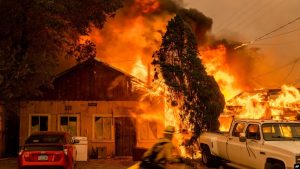
Doing everything we can to prevent or manage the spread of wildfires and to protect people, animals, forests, and structures from wildfires and their smoke pollution (for the long term) also requires that we do everything we can NOW to help mitigate and slow climate change, as our fast-changing, destabilized climate is the primary driver—the accelerant—of today’s catastrophic wildfires.
Related posts (which include some specific recommendations):
Note: This article is now also published on Resilience.org.
April 27, 2022
 More than two dozen of The Green Spotlight’s previous posts have covered or touched on green products (and green companies). Below is a list of many of those posts, which have covered everything from gifts to clothing to home/building-related products and equipment, as well as other types of goods. Many of the products mentioned in these posts would make good and useful gifts (for holidays, birthdays, etc.).
More than two dozen of The Green Spotlight’s previous posts have covered or touched on green products (and green companies). Below is a list of many of those posts, which have covered everything from gifts to clothing to home/building-related products and equipment, as well as other types of goods. Many of the products mentioned in these posts would make good and useful gifts (for holidays, birthdays, etc.).
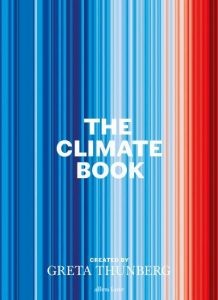
 Studies have shown that exposure to various environmental toxins—which people can be exposed to via the air, water, soil, or the use of certain products—seem very likely to contribute to the development of a number of neurological and neurodegenerative disorders and diseases (including Alzheimer’s, other types of dementia, Parkinson’s disease, ALS, MS) and can also harm neurological development (e.g., intelligence) in children and babies’ developing brains.
Studies have shown that exposure to various environmental toxins—which people can be exposed to via the air, water, soil, or the use of certain products—seem very likely to contribute to the development of a number of neurological and neurodegenerative disorders and diseases (including Alzheimer’s, other types of dementia, Parkinson’s disease, ALS, MS) and can also harm neurological development (e.g., intelligence) in children and babies’ developing brains.


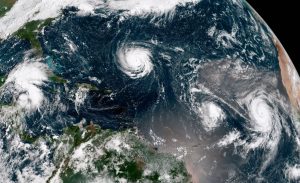 Over the past 10-15 years, it’s felt like new, large-scale crises emerge almost every day. It’s hard to focus on or prioritize any one issue, as so many issues are of dire importance.
Over the past 10-15 years, it’s felt like new, large-scale crises emerge almost every day. It’s hard to focus on or prioritize any one issue, as so many issues are of dire importance.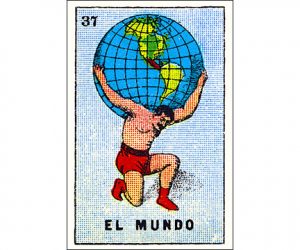 We all have so many personal responsibilities and daily struggles and stressors of our own that it can be very hard to take in what’s going on in other people’s lives and in other parts of the world. Many people turn away because they are already overwhelmed and are in survival mode, and simply can’t cope with or absorb any more sad or scary news or more problems that seem intractable; we all go through certain periods of our lives, or parts of our days, when our own problems (or our families’) are all (or more than) we can handle. Taking on the weight of the world can be crushing. Almost none of us are unscathed or truly OK these days, as most of us are facing numerous challenges at societal and individual levels. It’s important to “put your own oxygen mask on first, before helping others with theirs” because you can’t help others unless you are alive, relatively sane and healthy, and able to function. But whenever we do have the capacity, we should strive to be compassionate, stay aware of what is going on outside of our immediate lives and circumstances, and try to make a difference whenever and wherever we can, however small our efforts may seem, on whatever specific issue(s) we feel we can make an impact on. Helping others (and humanity at large) also gives our own lives a greater sense of meaning and purpose.
We all have so many personal responsibilities and daily struggles and stressors of our own that it can be very hard to take in what’s going on in other people’s lives and in other parts of the world. Many people turn away because they are already overwhelmed and are in survival mode, and simply can’t cope with or absorb any more sad or scary news or more problems that seem intractable; we all go through certain periods of our lives, or parts of our days, when our own problems (or our families’) are all (or more than) we can handle. Taking on the weight of the world can be crushing. Almost none of us are unscathed or truly OK these days, as most of us are facing numerous challenges at societal and individual levels. It’s important to “put your own oxygen mask on first, before helping others with theirs” because you can’t help others unless you are alive, relatively sane and healthy, and able to function. But whenever we do have the capacity, we should strive to be compassionate, stay aware of what is going on outside of our immediate lives and circumstances, and try to make a difference whenever and wherever we can, however small our efforts may seem, on whatever specific issue(s) we feel we can make an impact on. Helping others (and humanity at large) also gives our own lives a greater sense of meaning and purpose. While almost all of our posts can be used to inform or educate yourself or others, here are some of our posts that provide some direct resources for learning (for adults or children/youth). Many of the resources in these listings are also very entertaining:
While almost all of our posts can be used to inform or educate yourself or others, here are some of our posts that provide some direct resources for learning (for adults or children/youth). Many of the resources in these listings are also very entertaining: